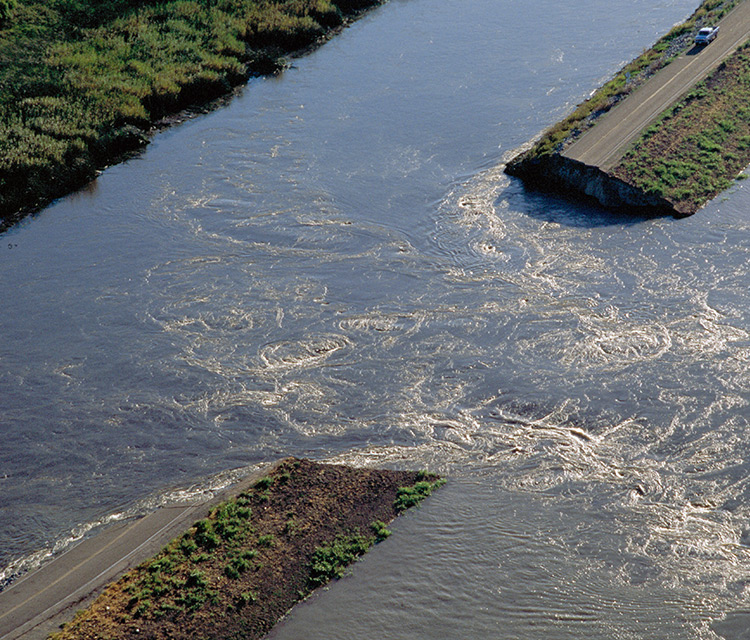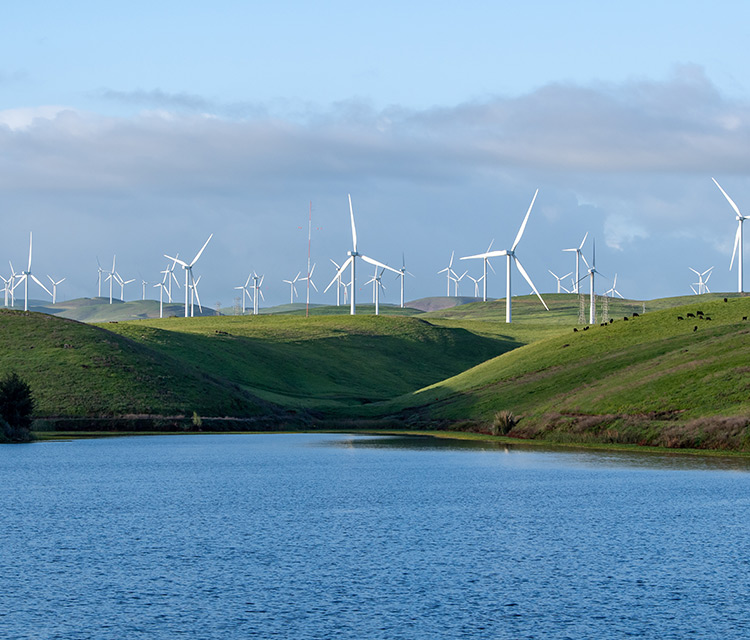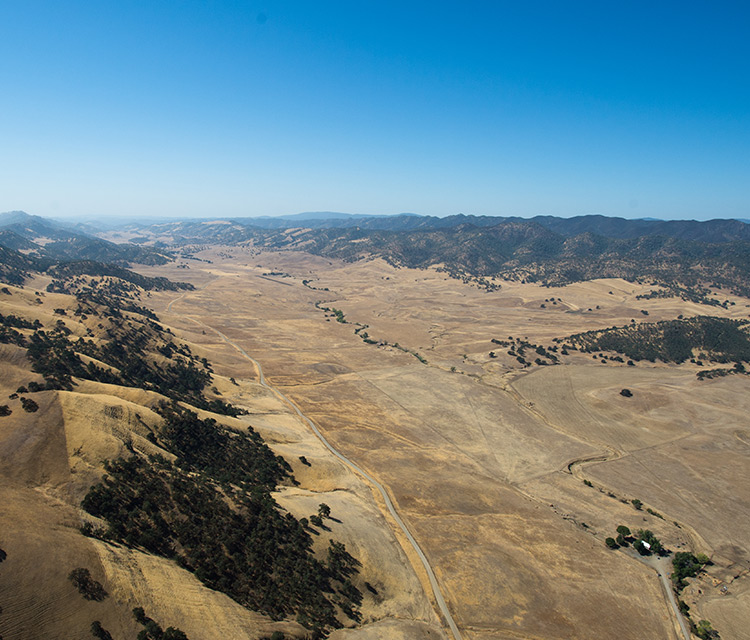Find a Document



The West Branch of the State Water Project’s California Aqueduct, courtesy of Department of Water Resources.
State Water Project:
From the Northern Sierra to Southern California
When the State Water Project was constructed in the 1960s and 70s, Metropolitan became the system’s largest contractor, importing up to 2 million acre-feet of water per year to our Southern California service area. The SWP on average provides about 30% of the water used in the region, but can account for nearly half of Southern California’s water in wet years.
The amount of water we have imported from Northern California from year to year has widely fluctuated over the past decade due to the rapidly changing climate and increasingly extreme weather patterns.
Regulations designed to protect fish species and water quality also have played a role in the limited availability of SWP supplies that pass through the Sacramento-San Joaquin Delta.
Metropolitan is engaged in projects and research that promote the health and sustainability of this region and the vital estuary at its heart. Our actions are guided by our Bay-Delta Policy Framework.
Bouldin Island, Sacramento-San Joaquin Delta
Sharing the Delta:
Balancing Ecosystem Health, Water Supply Reliability & Community
The Delta is the central hub of California’s water delivery system, but it is also vital to our economy, a number of endangered native fish species and the quality of life for millions of Californians. Balancing these diverse interests is the challenge of regulators, water managers, biologists and many others interested in the health of the environment and our water delivery system.
The amount of water that can be pumped out of the Delta for delivery to cities and farms in the south every year depends not only on the amount of snowpack runoff from the Sierra Mountains, but also on the condition of the Delta’s ecosystem and fisheries. For three decades, regulators have increasingly restricted deliveries in an effort to protect endangered species in the Delta, including the Delta smelt.
To support ecosystem health, as well as water reliability, Metropolitan purchased a number of Delta islands in 2016. As a responsible landowner and conscientious neighbor, we have committed to science-based watershed management, multi-benefit environmental initiatives and community-based partnerships with island stakeholders and throughout the region.
Pacific Flyway, Sacramento-San Joaquin Delta
Delta Infrastructure at Risk
At the heart of the SWP water delivery system is the Delta, a complex web of waterways, sloughs, canals and islands, where freshwater from California’s two largest rivers meets saltwater from the Pacific. But the Delta is also at risk.
Levees vulnerable to sea-level rise and earthquakes, more extreme weather patterns associated with climate change and the declining health of the Delta ecosystem all threaten the reliable delivery of water supplies through the Delta.

Levee breach, photo courtesy of DWR

Climate Change
Extreme weather associated with climate change may severely reduce SWP supplies available to Metropolitan in future years. Existing water quality and minimum flow regulations mean that during intense drought periods, very little SWP supplies may be delivered to Southern California.

Sea-Level Rise
Rising sea levels will not only put more pressure on the Delta’s dirt and peat levees; they also push seawater further into the Delta, impacting water quality, and threatening intake pumps that draw water out of the Delta and into the California Aqueduct, for delivery to cities and farms in the south. The levees are especially vulnerable as they sit only a few feet above sea level.

Soil Subsidence
In the 1850s, the Delta was transformed from a marsh into farmland, using levees to hold back water. This activity exposed peat soils, which are rapidly vaporizing, causing land levels to drop and turning the islands into bowls entirely dependent on the levees for preservation. As subsidence continues, water pressure on the levees increases, putting them at greater risk of collapse, which would draw seawater toward the Delta’s freshwater pathway.

Earthquakes
With several faults running through the region, the U.S. Geological Survey estimates a 72% percent chance of a magnitude 6.7 earthquake hitting the Bay Area in the next 30 years. This could cause widespread failures along the 1,100 miles of levees that surround Delta islands, allowing seawater to enter and render the freshwater that travels between the levees undrinkable for months, or even years.

Fishery Declines
Various endangered species call the Delta home. Regulators’ efforts to protect these species have largely focused on cutting back water exports from the SWP, although numerous scientific investigations have attributed the decline in the Delta’s ecosystem health to various causes.
Sacramento-San Joaquin Delta
The Proposed Delta Conveyance Project

Bethany Reservoir, photo courtesy of DWR
To ensure a reliable water future for 27 million Californians, Gov. Gavin Newsom's Delta Conveyance Project proposes to modernize the state's aging water infrastructure in the Sacramento-San Joaquin Delta.
The Delta Conveyance Project is designed to safeguard this critical resource by improving the system’s ability to capture and move water during high-flow periods, delivering it to reservoirs and groundwater basins throughout the state. It adds a second means to divert and convey water to the Bethany Reservoir at the start of the California Aqueduct while meeting applicable water quality and sensitive species regulatory requirements, which also provides redundancy and flexibility. This would strengthen California’s resilience to drought, climate change, sea-level rise and seismic risks and help secure long-term water supply reliability.
Significantly refined from past proposals, the current project reflects community and environmental input, cuts the construction footprint in half, reroutes infrastructure to avoid central Delta communities and includes $200 million in community benefits for the region.
Metropolitan’s Board of Directors voted in 2020 and 2024 to support funding the district’s share of environmental planning and pre-construction costs, joining other State Water Project contractors.
In December 2023, DWR certified its final Environmental Impact Report for the Delta Conveyance Project, adopted a Mitigation Monitoring and Reporting Program, and approved the Bethany Alignment alternative.
A future decision on Metropolitan’s participation in the project is expected to come before Metropolitan’s board in 2027 in light of more advanced design and an updated cost estimate.
While the DCP is under consideration, Metropolitan has been meeting with diverse voices within the Delta – including NGO, tribal, academic and government agencies – to identify common interests and improve reliability in the Delta.
Proposed Legislation for DCP
In May 2025, Gov. Newsom introduced a package of legislation aimed at expediting the Delta Conveyance Project by streamlining the water right permit process, expediting litigation, simplifying and rendering land acquisition from willing sellers more flexible, empowering DWR to contract with electric power utilities and clarifying DWR’s existing authority to construct and issue bonds to finance the project.
For years, the state has proposed projects to address the challenges of Delta Conveyance, which have been slowed by red tape and delays. The proposal is designed to reduce those delays going forward.
Each year of delay adds nearly half a billion dollars to the project’s total costs.
For Metropolitan, streamlining is critical. It ensures the district, as well as water agencies across the state, can make informed investment decisions that support long-term water reliability and affordability for the communities we serve.
The legislation proposed by Gov. Newsom would expedite permitting, litigation, land acquisition and bond financing – meaning lower costs, fewer delays, and better information so that agencies like Metropolitan can make decisions about moving forward with funding the construction of this project, and if they do move forward, the ability to finance and expeditiously construct it.
This is important to Metropolitan, and for water agencies across the state, as we determine how to best invest in water resources to promote water reliability and affordability for the communities we serve.
Sites Reservoir Project
Sites Reservoir is a proposed 1.5 million acre-foot off-stream reservoir in the Sacramento Valley that would capture stormwater flows from the Sacramento River after all other water rights and regulatory requirements are met, maximizing benefits to cities, agricultural communities and the environment. In Southern California, this translates to improved supply reliability in drought years, especially for our communities that are dependent on the State Water Project as well as reduced risk of depleting Southern California’s groundwater supplies.
Since 2017, Metropolitan has invested about $31 million into the planning, permitting and environmental review effort for Sites Reservoir. Any future investment would need to be considered by Metropolitan’s board.

Proposed location of Sites Reservoir, photo courtesy of DWR
Resources
Metropolitan Water District – Media Statement
Californians for Water Security – Coalition Support Letter
State of California – List of Statements of Support
Municipal Water District of Orange County – News Release
Inland Empire (Inland Empire Utilities Agency, Western Municipal Water District, Eastern Municipal Water District, Three Valleys Municipal Water District – News Release
Las Virgenes Municipal Water District – News Release
Three Valleys Municipal Water District – News Release